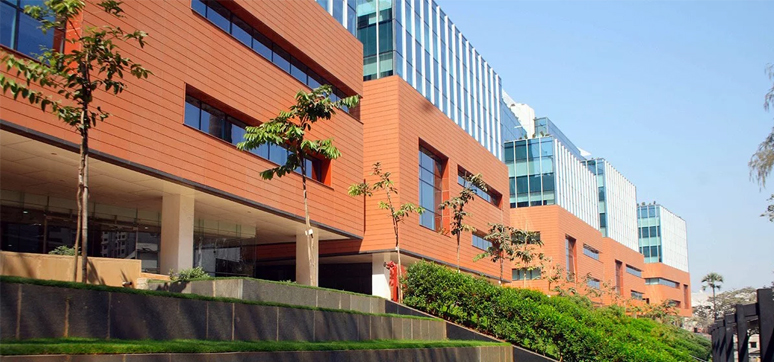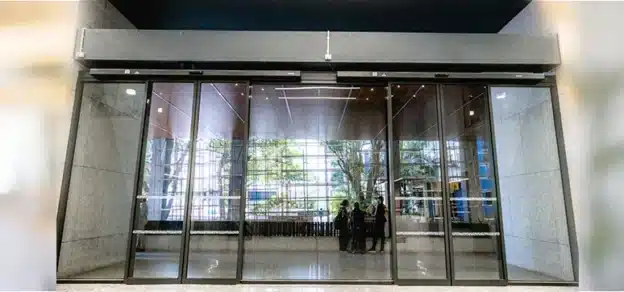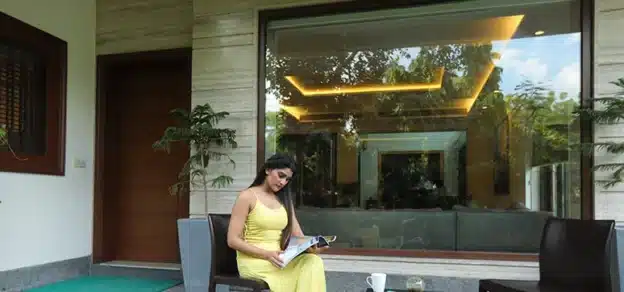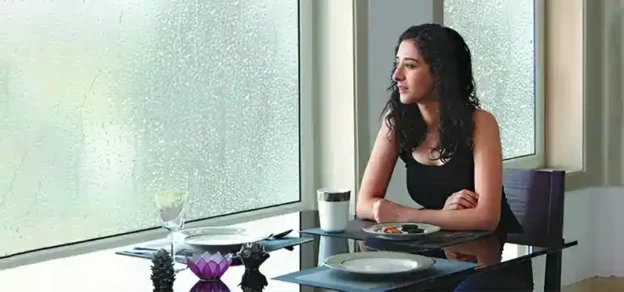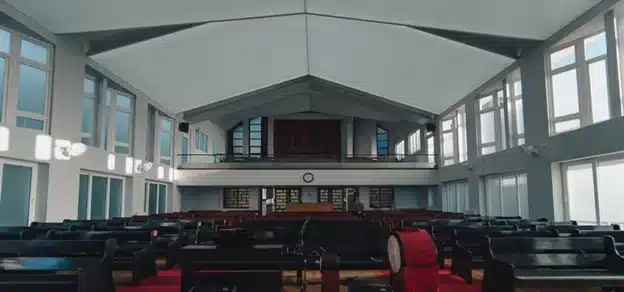Knowing how to do things not just with the head, but with the hands as well, might seem a programmatic and ideological goal. It is not. It is a way of safeguarding creative freedom. We envision a workshop against a studio to Build.
The Green Revolution
Tall buildings are getting greener. Or green buildings are getting taller. Either way, you slice it, the sustainability movement in the world has gone large-scale and skyward, and nowhere is this more apparent than in Mumbai or in other metro cities of India. By the end of this decade, several green high-rises vis-à-vis apartment buildings, and office towers for financial institutions which are now being planned or are under construction will pepper the skyline. Why the surge? Owners and developers say they’ve discussed green design for years, but no one wanted to be the first to take the plunge.
Within a year’s time from 1999 to 2000, environmental guidelines for construction were passed, and the U.S. Green Building Council’s Leadership in Energy and Environmental Design (LEED) certification program was established. Those events changed everything. Before that, no one used to bother. No one understood green design or what its advantages were. But LEED gave us a blueprint for understanding how to get there, and how to scale the heights of the new Green Mantra. The projects that are currently underway involve committed clients who hire architects capable of leading multidisciplinary and often international teams through the confusing choreography of standards, guidelines, and best practices for sustainable design. Though the technologies and strategies they employ aren’t always new, as the vernacular or building ideologies of some of the great masters, many are rare in tall buildings, a situation that will change as more cities embrace density and draft their own sustainability principles. When our practice was chosen as the winning team for many new projects in Mumbai, Pune and Bangalore, the critics swooned over facades of ultra-clear glass shaded by a scrim of white ceramics. In late 2002, lighting consultants and interior architects were already evaluating lighting and shading systems. So began a one-of-a-kind research project. The design team as an aspiration met with researchers, who recommended an integrated facade management system of dimmable lights and mechanized shades that would respond to the sun’s angle and intensity. The zones and control schemes were tweaked continually as data were collected. We didn’t want fixtures going on and off, or shades going up and down constantly, Mechanical means are inundated to the limits of operational time spans. The study showed that enough daylight penetrated the 44-foot perimeter zone of the building to permit lights in that area to be dimmed, if not turned off entirely, and lighting energy savings in winter ranged from 10 to 70 per cent. The design team issued solicitations based on detailed performance specifications written during the study.
“You use a glass mirror to see your face; you use works of art to see your soul.”
– George Bernard Shaw
The Efficiency ThoughtBank
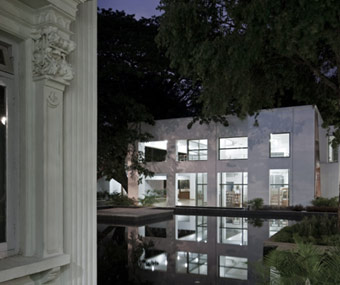
European architects have turned to double-walled glazing systems for efficiency. Such a system wouldn’t have worked here because of hot, humid summers. Still, various methods partake in realizing an efficient building façade:
- One “face” of the building, which looks towards the South, is preferred and designed to be double-glazed to prevent heat gain.
- Floor-to-ceiling glass is fritted at the top and bottom for interior comfort but left clear in the middle to preserve views.
- A variety of energy-saving technologies are planned, including an onsite 4.6-megawatt cogeneration system, geothermal heating and cooling etc.
- Building-integrated photovoltaic installed in three places—atop a glass roof that floats over the entrance, along the entry pavilion, and on spandrels that support a 10-story notch on the facade.
Although it won’t produce large amounts of electricity, we use BIPVs near the ground so that people can see them and learn the importance of renewable energy.
Until not long ago, the architects and owners really led the process, but now we’re used to teaming up with engineers and consultants from the beginning of the planning stage.
In the process of aspiring for sustainable design practices, we challenge ourselves to make the best use of everything that’s available for free. For instance air, sunlight, rainfall. Amongst our most innovative endeavours for a sustainable design includes a one-acre planted roof on the podium and an air filtration system that removes 95 per cent of particulates, compared to 35 per cent for most buildings.
Setting The Benchmark – Our Own Green Building
Buildings have such a huge impact on the environment and health, so having our own green building was a way to recognize this and to put our employees first.

People don’t interview for a job and wonder, ‘What’s the air quality like in here?’ But when they’re looking for an apartment, they want clean air; and clean water and they’ll pay extra for those amenities. Rents in these buildings are anywhere between 10 to 20 per cent higher than the conventional buildings.
Challenges And The Ways Around
Accolades aside, the true test of sustainability begins when the dust starts settling on these so-called sustainable sites. Many buildings start failing and efficiency is reduced to just a number. This is especially true of large structures with complex systems, multiple tenants, and mixed uses. Normally each of these buildings is fully commissioned and operating problems start to surface much later. LEED aims to correct this situation by requiring projects to be reevaluated every five years to maintain their rating.
In cities like Mumbai, the zoning laws are based so much on the street grid that they are totally contrary to green design. They almost predetermine form and orientation. But there are exceptions that point to the growing influence of LEED and local sustainability mandates, despite the inevitable limitations and flaws of such criteria e.g.Nirlon Towers in Goregaon.
Peer pressure helps too. It would have been nice to have been the first to build this way in History, but that’s okay we’ll just set higher goals the next time.
“Don’t tell me the moon is shining; show me the glint of light on broken glass.”
― Anton Chekhov
Although even architects agree they lost ground to designs bound by higher energy prices, India has continuously been taking cues from multiple high-rises in Europe, Shanghai, Mumbai, Hong Kong and other parts of the world. Future projects will see even more meddling of architecture and engineering to meet sustainability goals through formal means, and the most innovative examples might occur.
The Way Forward
The most recent analysis, which was carried out, looked at heat gain in traditional homes. The study found that, in a traditional detached house, half of all heat gain was through the roof and through air infiltration/ventilation (28 and 22 per cent respectively). The windows accounted for just 15 per cent of the heat gain, rising to 19 per cent in a flatted apartment. This clearly shows that the focus for remedial measures should always be on insulating the roof and controlling infiltration, and the key areas of concern are none other than windows that have to be addressed not just for infiltration losses but also to improve thermal performance.
Another study commissioned looked at the improvements that could be made to a typical sash window to reduce its heat gain or loss. The tests included the original single-glazed window which had been draught-proofed using the Ventrolla system and augmented by the following:-
- Traditional timber shutters.
- Modified timber shutters with a thin layer of insulation in the panels.
- Secondary glazing using a proprietary Aluminum system fitted tight to the existing sash.
- Heavy curtains.
- A traditional blind.
- A blind with a low emissivity (low-E) plastic film is applied to the side facing the window.
- A honeycomb blind has two layers that enclose air and pockets.
After the tests were completed, the window was re-glazed using slim-profile low-E, argon-filled double-glazed units and tested again. (Slim-profile sealed units were chosen because they can be fitted within the glazing bars without obscuring the sight lines.) The results were as follows:-
Reduction in heat loss – U-Value in W/m²K
Against reference value of 5.4 W/m2K for a single glass (centre of the pane)
| Description | Reduction of energy loss in % | Resulting U-Value |
|---|---|---|
| Heavy Curtains | 14% | 3.2 |
| Modern Roller Blind | 22% | 3.0 |
| Victorian Blind | 28% | 3.2 |
| Honeycomb Blind | 36% | 2.4 |
| Modern roller blind with Low-E film | 45% | 2.2 |
| Shutters | 51% | 2.2 |
| DGU in Slim Profile | 55% | 1.9 |
| Modified Shutters | 60% | 1.6 |
| Secondary Glazing System | 63% | 1.7 |
“People are constantly asking Portia and me if we are going to have children. We thought about it. We love to be around children after they’ve been fed and bathed. But we ultimately decided that we didn’t want children of our own. There is far too much glass in our house.”
– Ellen DeGeneres
The findings showed that the chosen secondary glazing system actually outperformed the chosen double-glazing system, with a U-value that was more than adequate for current building regulations.
Several combinations were also tested. Of these, the use of secondary glazing with heavy curtains is the most likely to be encountered in homes at night, achieving a U-value of just 1.3 W/m²K, and a heat loss reduction of 66 per cent against single glazing.
The findings do not mean that secondary glazing is always more effective than double-glazing, as many factors affect its performance. For example, the spacer bar around the perimeter of the pane of a double-glazed unit will conduct more heat than the centre of the unit, so a double-glazed small-paned window such as a 6ft x 6ft sash window will be less efficient than the one with a single pane. Nevertheless, the analysis does show that, from a heat performance perspective, the use of properly installed secondary glazing provides perfectly adequate levels of insulation, which can often be more effective than double-glazing.
Historic And Aesthetic Significance Of Windows
Windows are the key to the character of historic buildings or buildings built with no greening principles. A minor change like increasing the thickness of glazing bars can have a dramatic impact on the character of a window. Reflections are also extremely important, in a small-paned window, each pane reflects at a slightly different angle, resulting in broken reflection lines across the window. This variation is lost when dummy glazing bars are planted onto the face of a large sheet of glass. The old glass itself has a unique character; crown glass has radiating ripples and is widely found in small-paned Georgian windows, while the cylinder glass commonly found in windows made after 1845 has parallel ripples. Both distort reflections across the pane, adding character to the appearance of the building.
As so often in conservation, a solution for one problem raises further issues. Designing a successful programme of thermal improvements requires a holistic approach to the interior environment of the building by a specialist who understands how historic or in-use buildings work. There is no single answer. Each situation needs to be considered individually.
Structural Glazing – An Ode To Modern Façade Design
Structural Glazing systems are a brilliant, cost-effective solution for contemporary glass design. Structural Glazing systems consist of a fully or partially framed internal finish, with the glass structurally adhered to the outside face. All to produce a complete flush silicone jointed external finish. Whilst the framed internal appearance is more traditional, structural glazing provides high flexibility in regard to the sections utilized and framework finish.
From a weathering perspective, Structural Glazing systems are typically reliant on the application of sealant. Therefore once a Structural Glazing system has been installed and initially tested under severe weather conditions, weather integrity should be maintained for at least 20 years from application.
As structural glazing systems do not rely on internal weep systems and subsequent drainage, they may be installed at as low as 3-5 degrees pitch. The system comprises of structural glazing tapes, a polyurethane structural adhesive (air-cured) and the internal face of the glass black primed locally over all supporting framework. The glass will be provided with a black spacer and silicone seal as standard, providing a complete black reflective appearance, which conceals the internal frame. Technically the glass does not need to be 4-edge supported, making it feasible for many applications to contain unsupported glass-to-glass silicone joints.
It is important whilst installing structural glazing that the conditions and environment are correct for the product utilized. Some adhesive methods involve UV light curing through the glass, which in turn may become less effective over spacer bar details. All vertical structural glazing at height should also be mechanically retained.
Structural Glazing is an excellent way of producing a structure, which aesthetically suits most external elevations and surrounding environments.
– Muhammad Iqbal
